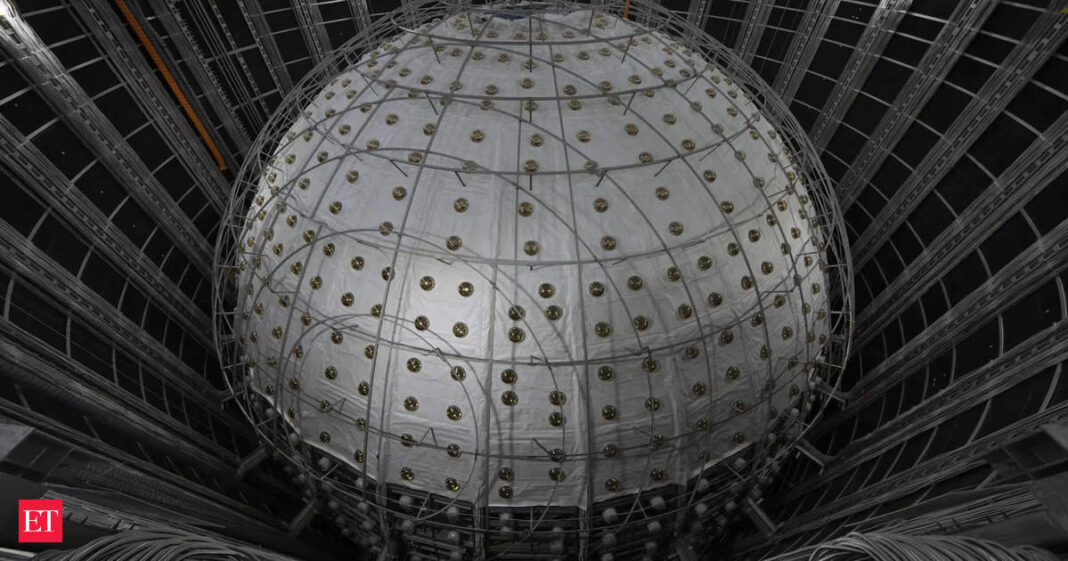The Challenge of Detecting Neutrinos
Neutrinos are nearly impossible to detect on their own due to their minuscule mass and weak interaction with matter. They travel through the universe, including our bodies, without leaving any trace. To study them, scientists measure the flashes of light or charged particles produced when neutrinos collide with other matter. As these interactions are rare, large detectors are needed to increase the chances of capturing a collision.
“The solution for how we measure these neutrinos is to build very, very big detectors,” Andre de Gouvea, a theoretical physicist at Northwestern University told AP. The JUNO detector is one of three being built worldwide to study neutrinos in greater detail.
Building the Giant Detector
The JUNO detector, under construction for over nine years, is designed to detect antineutrinos—particles produced by nuclear reactors. These antineutrinos, generated by two power plants 31 miles away, will interact with particles inside the detector, creating detectable flashes of light. The detector’s design aims to unravel a long-standing mystery in neutrino science: the different “flavours” of neutrinos and their mass hierarchy.
“It’s the least understood particle in our world,” said Cao Jun, a manager of the JUNO project told AP. The detector’s success could provide groundbreaking answers to these questions, but catching these particles is no easy task.
Global Collaboration in Neutrino Research
JUNO is not alone in this quest. Two other neutrino detectors, Japan’s Hyper-Kamiokande and the Deep Underground Neutrino Experiment in the United States, are under construction and expected to begin operations in the coming years. These detectors will work together to cross-check results and deepen scientists’ understanding of neutrinos.The data gathered will help researchers unlock the secrets of neutrinos and, potentially, answer big questions about the universe’s formation.
Neutrinos and the Origin of the Universe
Neutrinos are believed to have existed since the Big Bang, making them key to understanding the early universe. Their study could help scientists uncover why there is more matter than antimatter in the universe, a mystery that has long baffled researchers.
As the JUNO detector begins its work next year, it will contribute to a growing body of knowledge about these elusive particles and the fundamental forces that shaped the universe.

